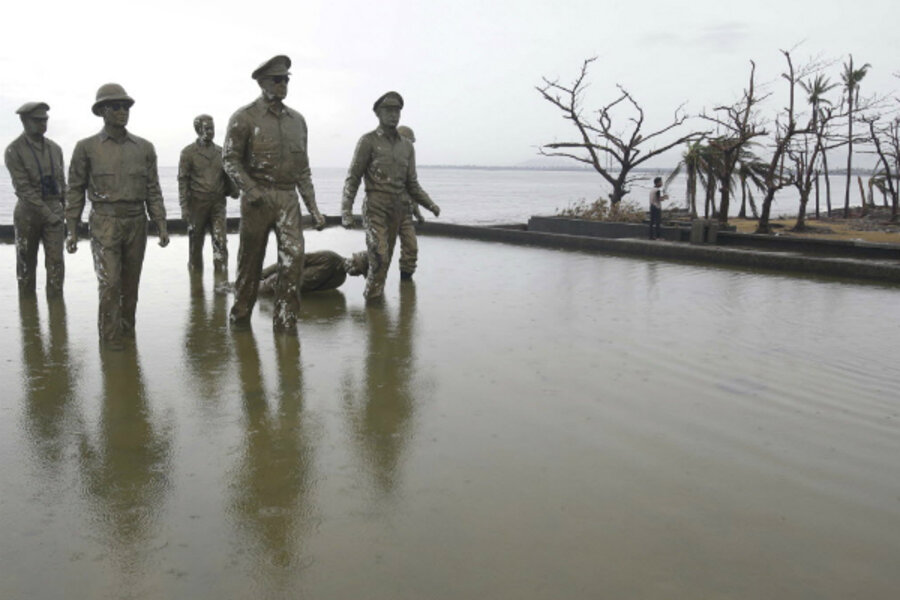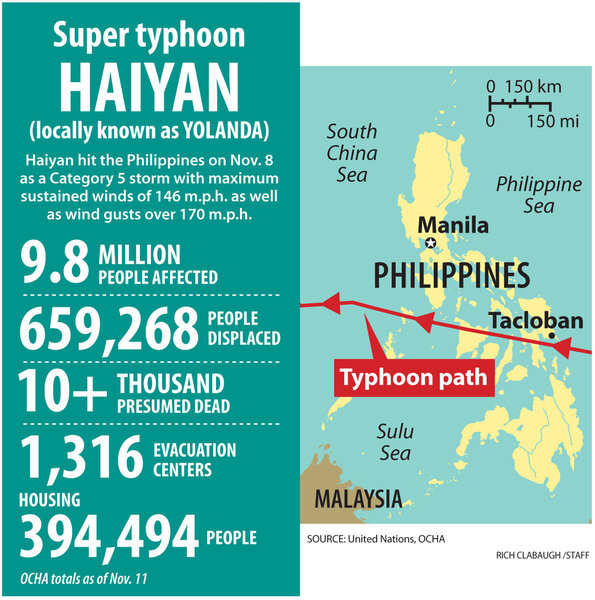Philippines: US military's ships, aircraft to aid in typhoon Haiyan relief
Loading...
| WASHINGTON
The Pentagon chief has ordered the USS George Washington aircraft carrier group, with its contingent of Navy cruisers and a destroyer ship, “to make best speed” to the Philippines.
The group, which carries with it 5,000 sailors and more than 80 aircraft, will aid in disaster relief in a country where as many as 10,000 people may have died and tens of thousands are now homeless, according to current US military estimates.
These US sailors will join some 90 US Marines who arrived on the ground Saturday. That number will grow as a Marine Expeditionary Unit, which is generally comprised of some 2,200 Marines, may soon be in route to the region.
Haiyan, which has been designated a super typhoon, has potentially affected more than 4.2 million people across 36 provinces in the Philippines, according to the Pentagon.
The crew of the USS George Washington carrier group was previously on a port visit in Hong Kong, but sailors were recalled from shore leave to speed the carrier group on its way.
The group is expected to arrive in the Philippines within the next 24 to 48 hours, according to Pentagon Press Secretary George Little. These ships and aircraft are tasked with providing humanitarian assistance, supplies, and medical care.
In the meantime, the Defense Department is working closely with the Philippine government to determine what additional US military assets may be required, Mr. Little says.
The US Marines on the ground in the Philippines are currently focused on search and rescue and helicopter lift support. They have also made use of the MV-22 Osprey, which along with vertical takeoff and landing capabilities has as an ability to quickly convert to a traditional fixed wing configuration that allows it to fly more quickly and cover more territory.
This has been key to the Marine Corps’ relief effort on the ground, says Capt. Richard Ulsh, a Marine Corps spokesman at the Pentagon.
“There are a bunch of little islands we need to get to,” he says, “and islanders that have to be moved over long distances.” And this requires a modern form of island-hopping, Ulsh adds.
The Osprey can get into the most devastated and remote locations, because it can take off and land like a helicopter but fly like an airplane, Ulsh notes. “It can move more people and more goods faster and further.”
The Ospreys are landing on devastated islands to deliver food and water and, after unloading the supplies, then ferrying injured islanders back to areas where they are able to receive care.
US troops are also bringing large bladders of fuel to create “fuel farms” for relief vehicles, as well as bladders full of water and water purification systems.
In humanitarian relief efforts, time is of the essence. “Responsiveness is key,” Ulsh notes. “And the key to responsiveness is timeliness.”








